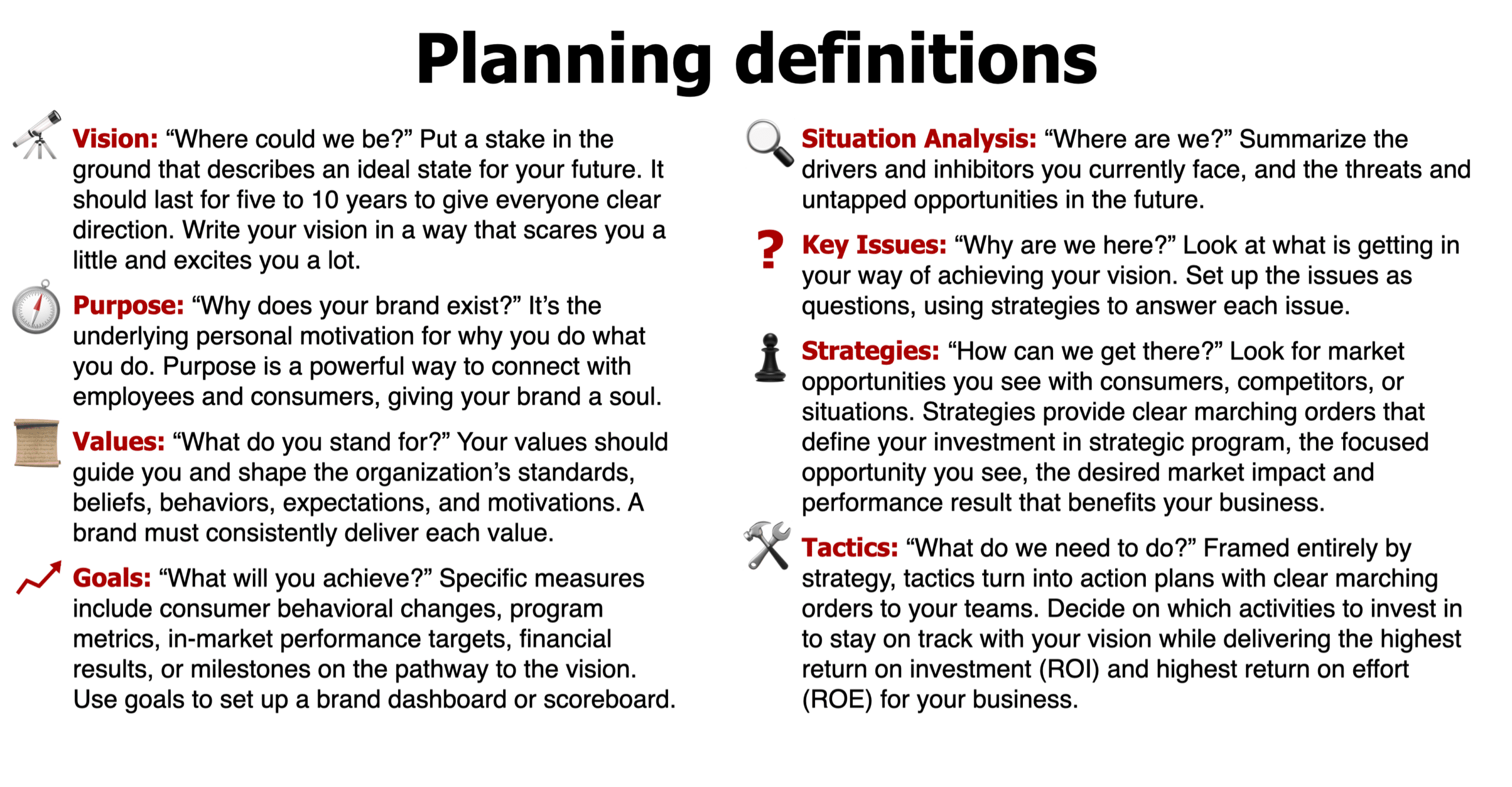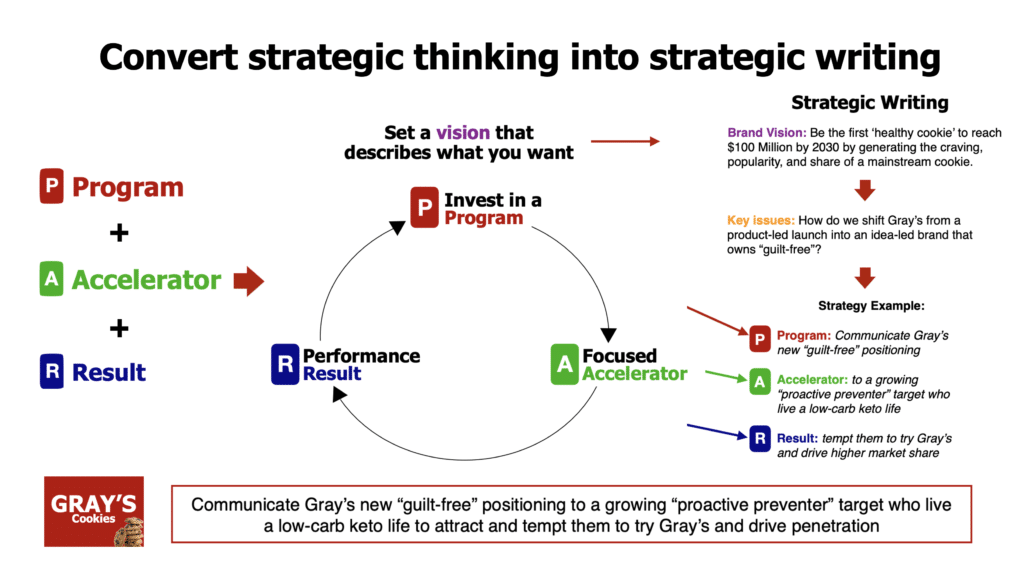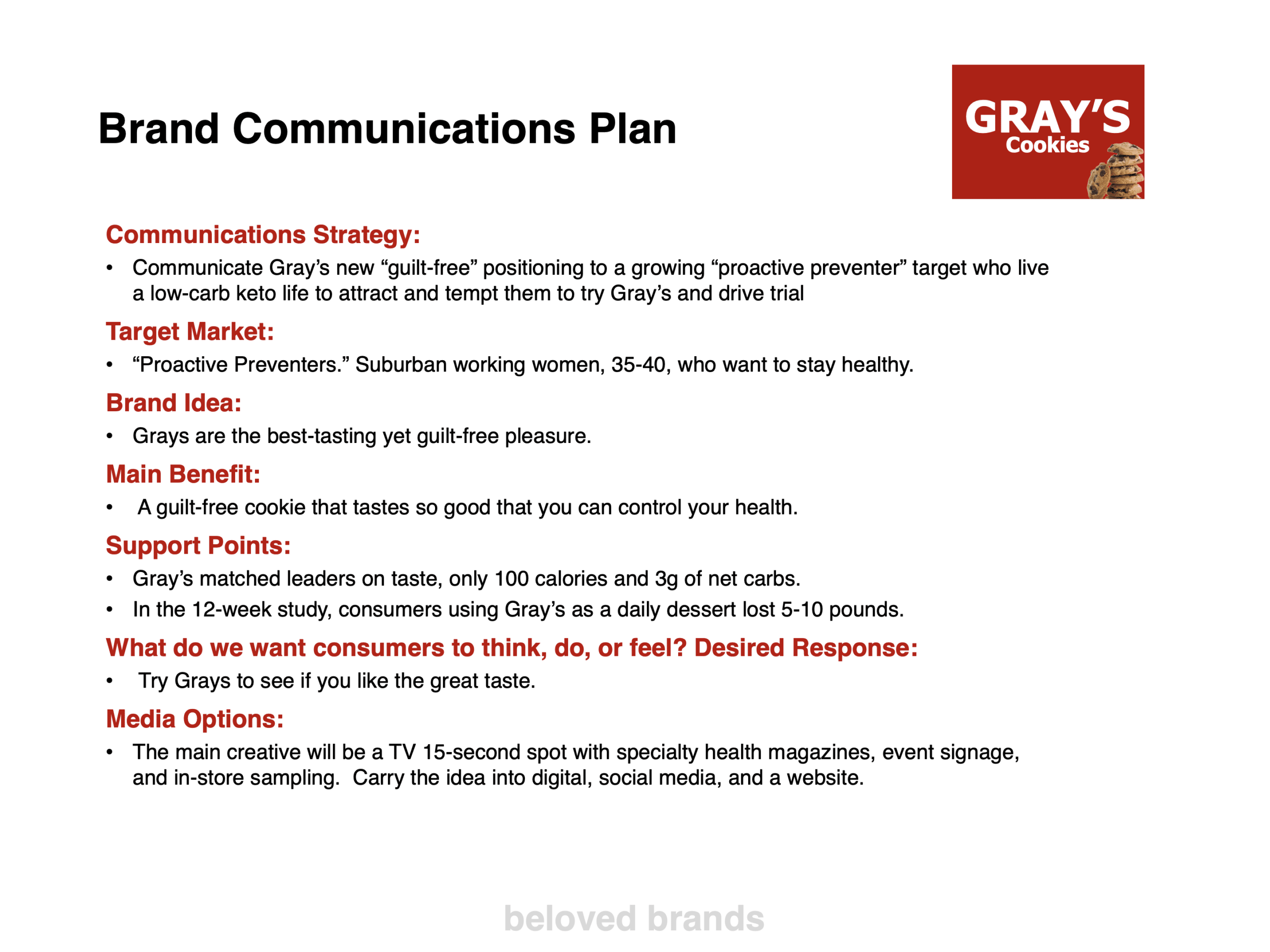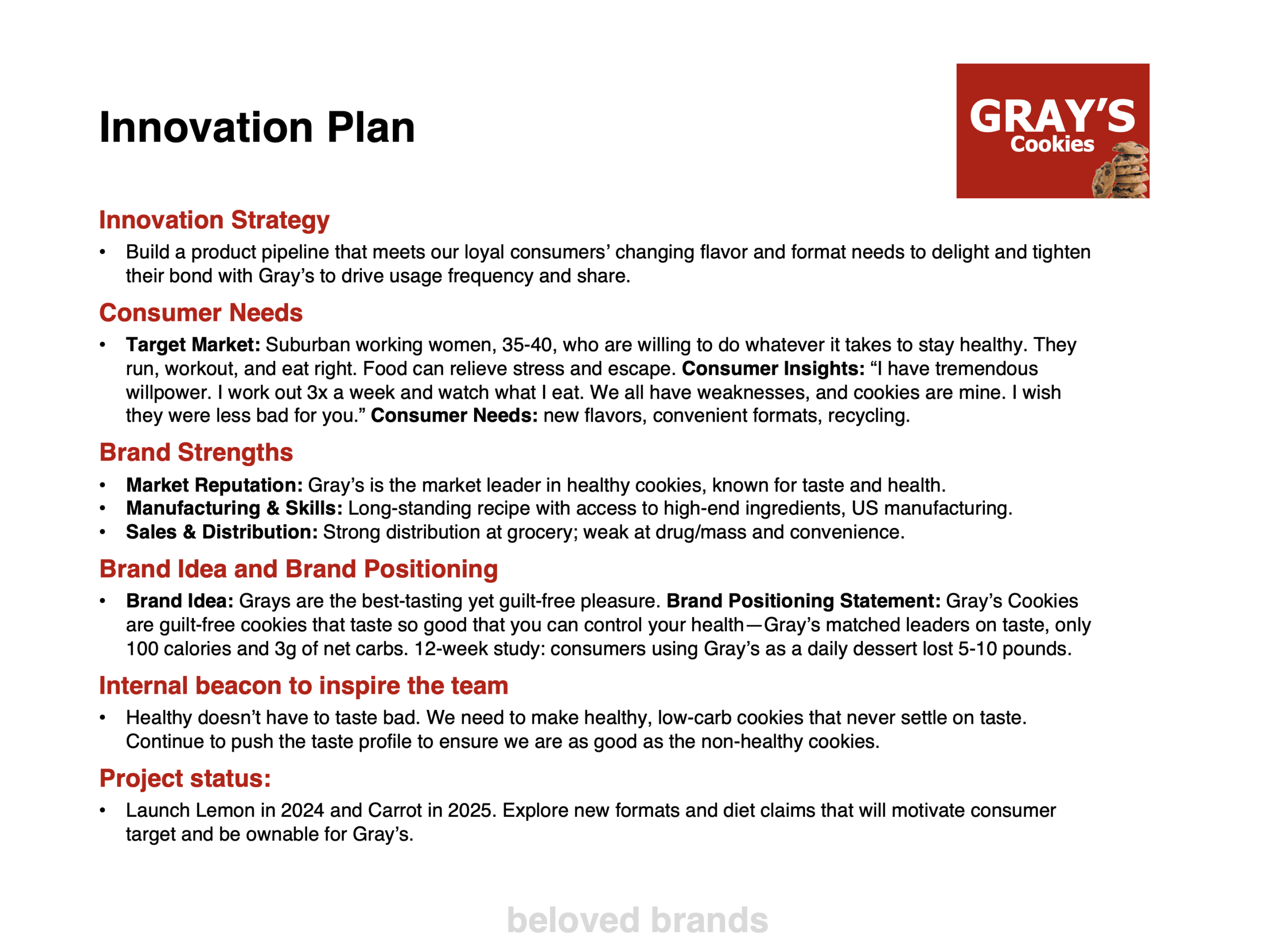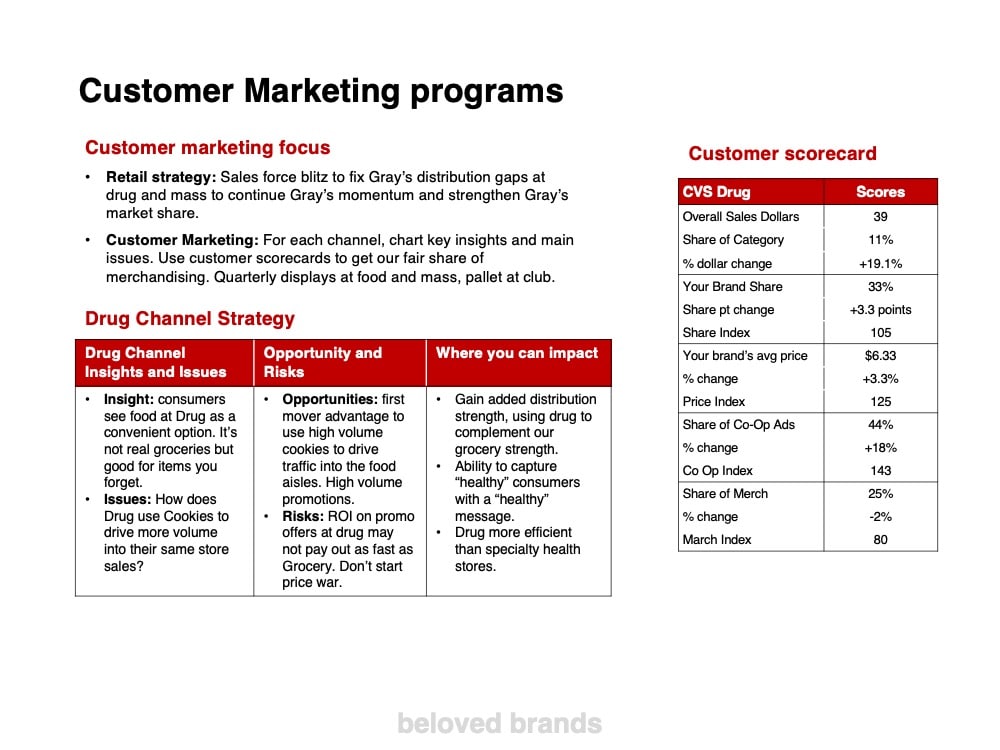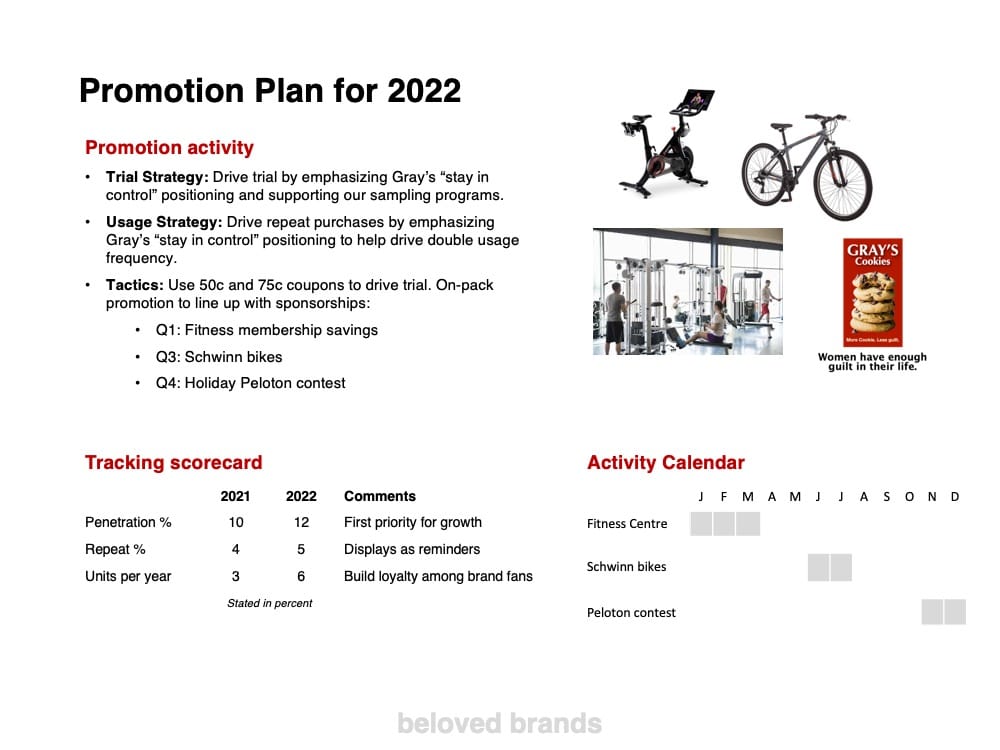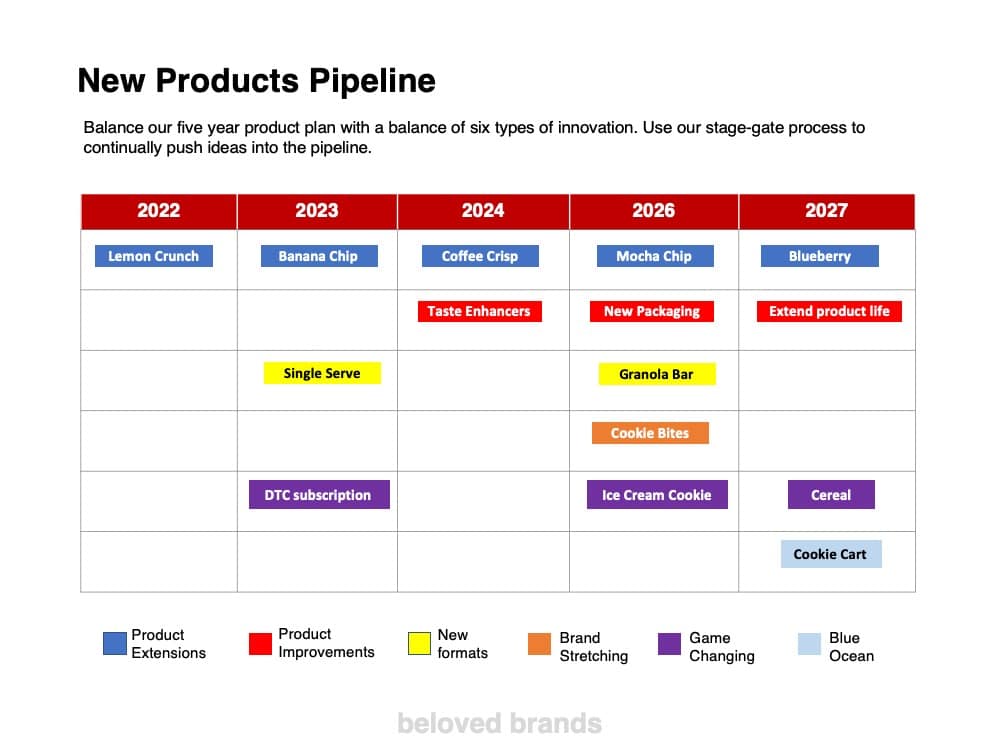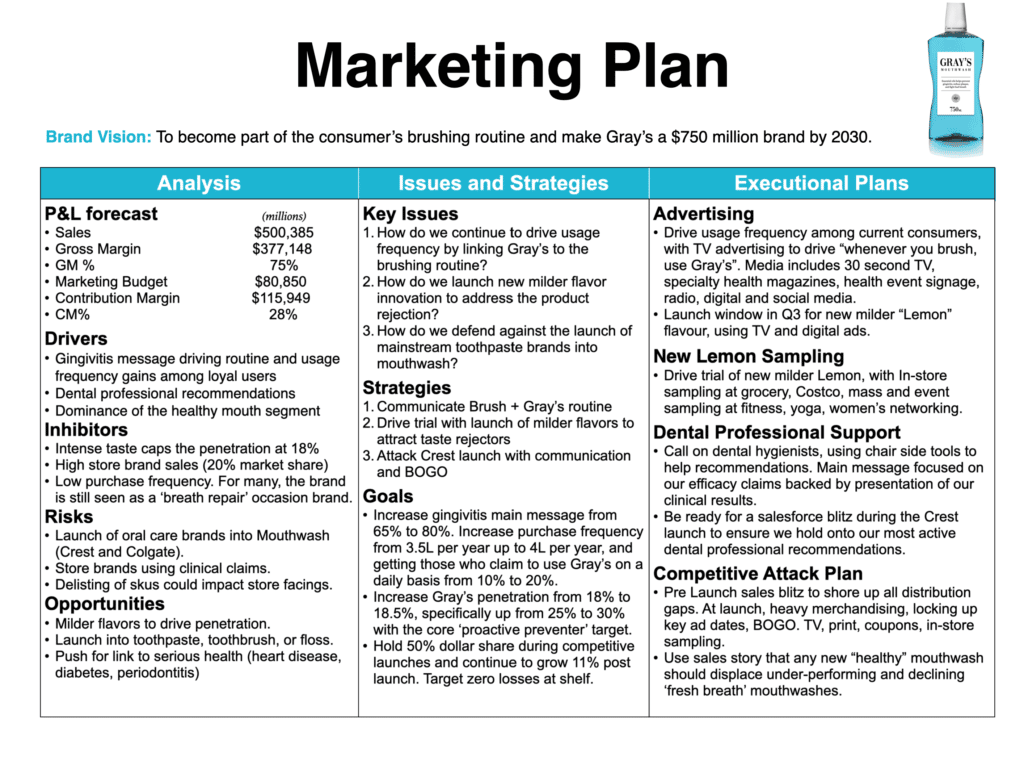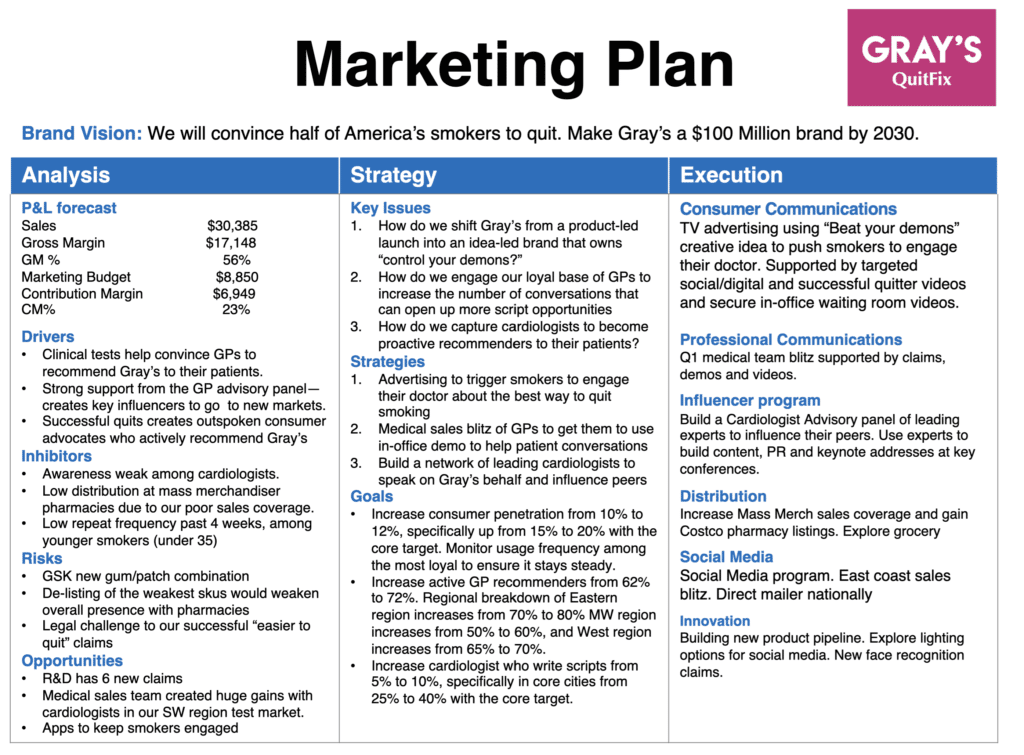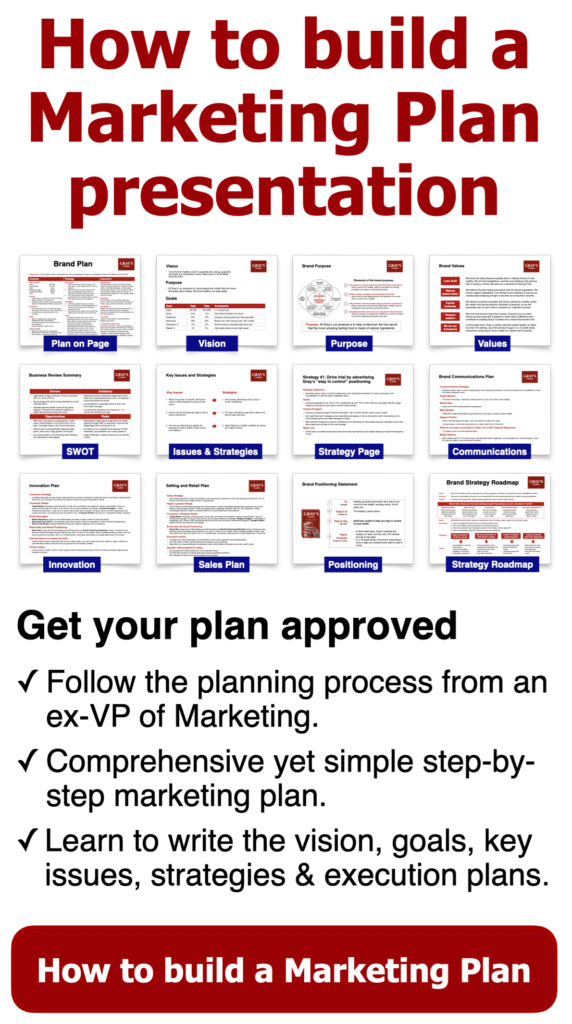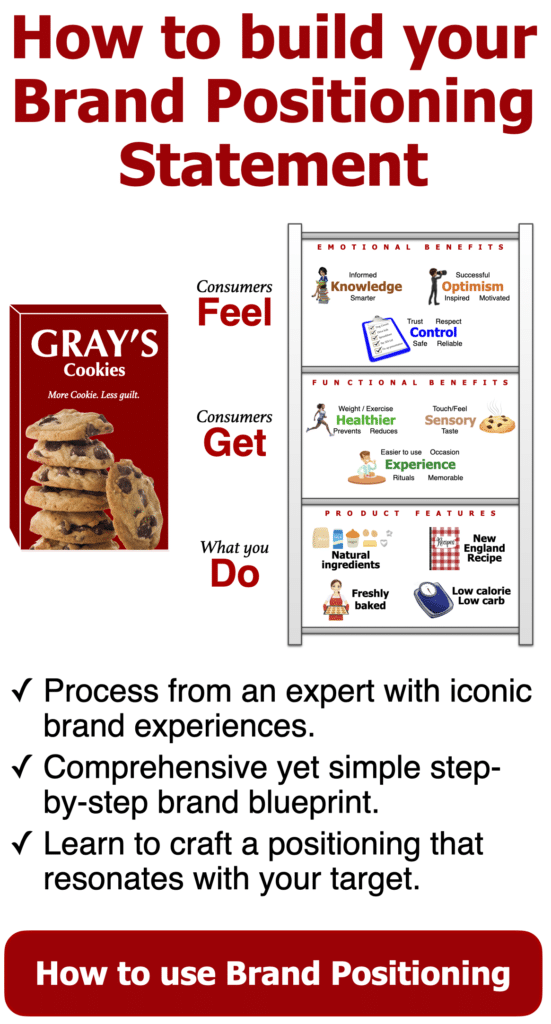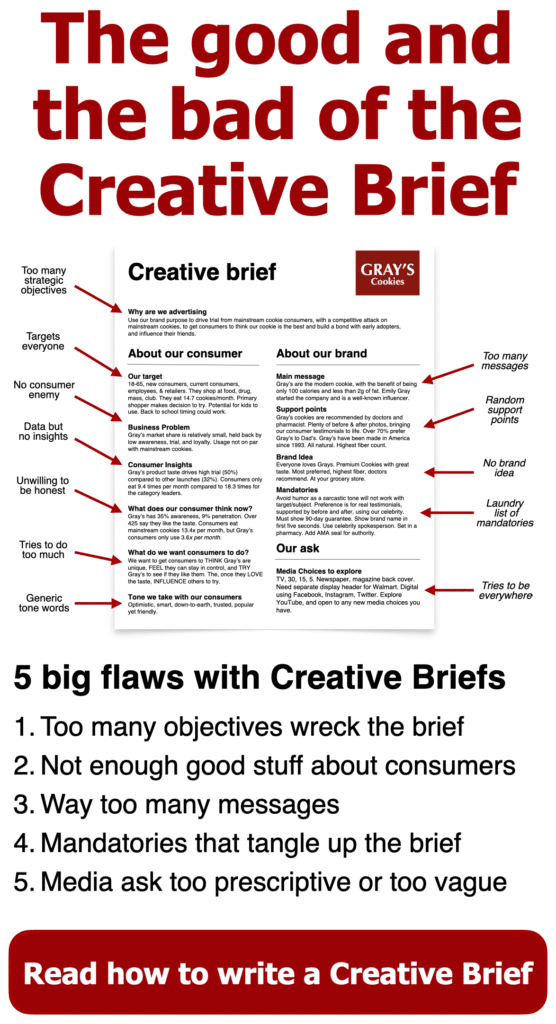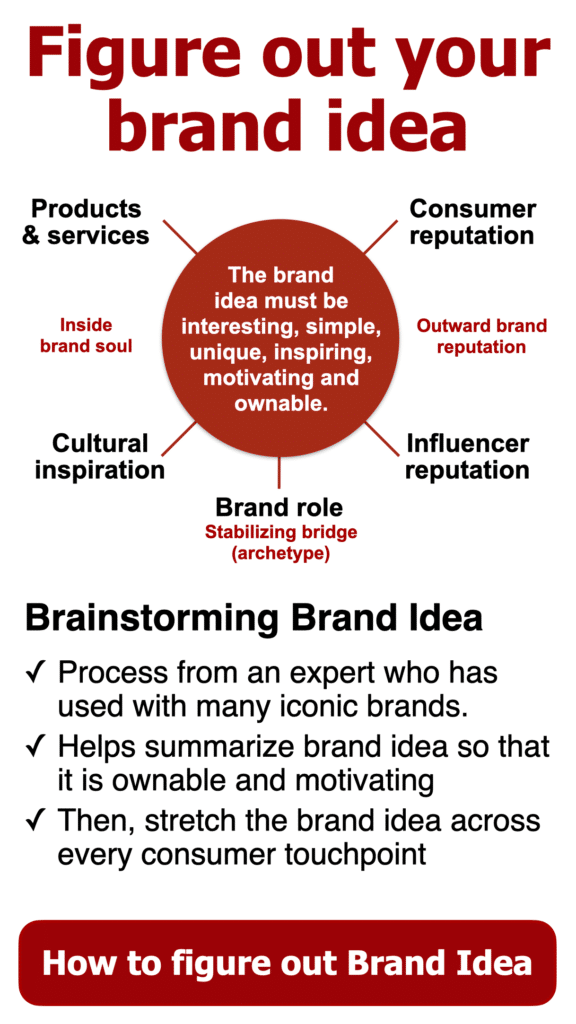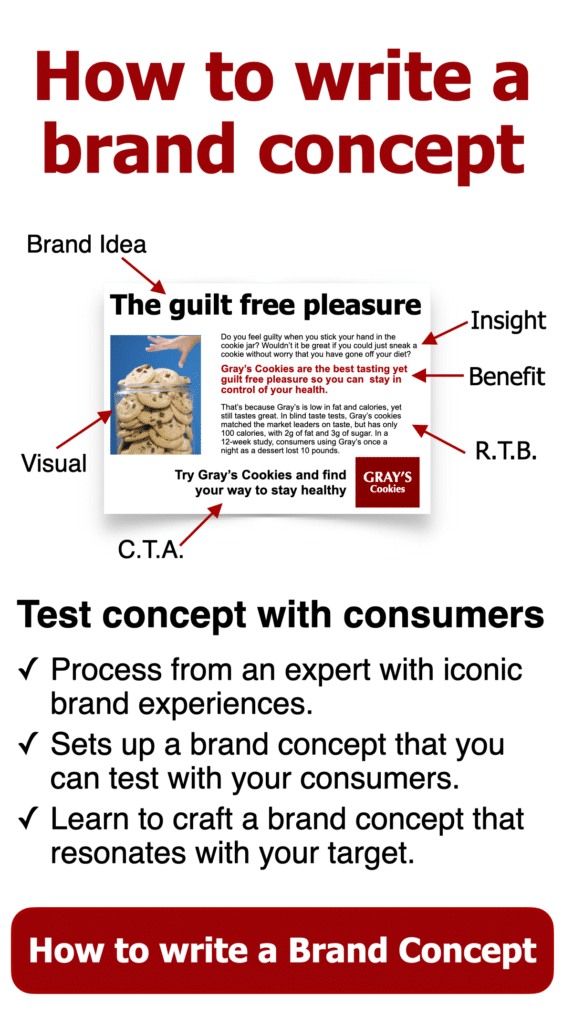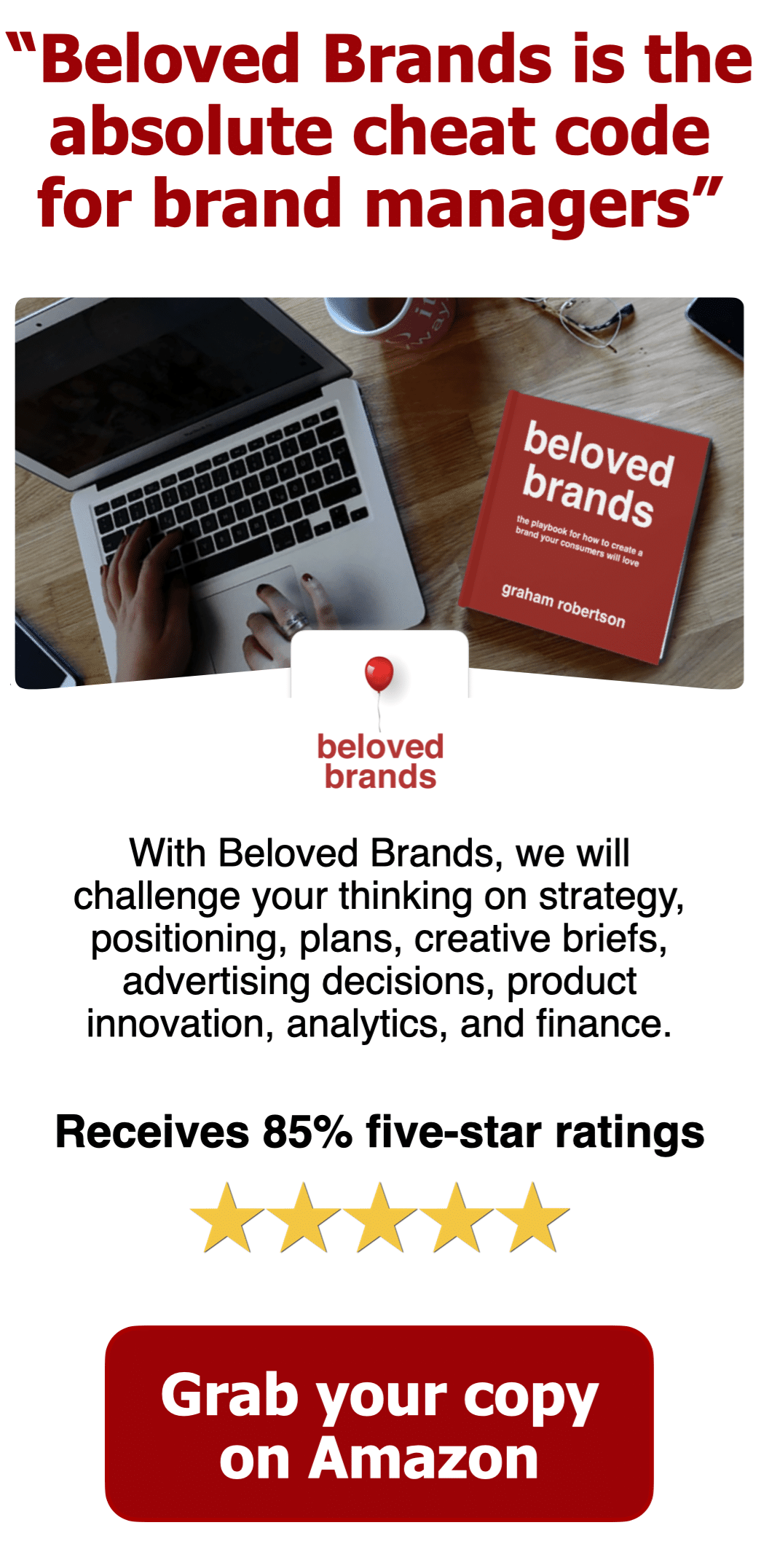Are you in the middle of building a marketing plan presentation? You are in the right plan. You can follow our marketing plan template with plenty of marketing plan examples, which will make writing the plan much easier. Our marketing plan guide distills the knowledge I gained as a former VP of Marketing at J&J, complemented by valuable marketing experience at every level from my tenure at Coke and General Mills.
Unlock the secrets of an impactful Marketing Plan from an ex-VP of Marketing at Johnson & Johnson.
As someone who’s climbed the corporate ladder and has created and critiqued numerous marketing strategies, I understand what your management team wants and what will get approved.
To illustrate, click on our Marketing Plan Process. Importantly, you download or share.
Building the Marketing Plan Presentation
Understanding the importance of a marketing plan checklist
Essentially, the marketing plan acts as a roadmap, guiding your marketing efforts and ensuring that every action you take aligns with your business goals. Furthermore, a marketing plan checklist is a handy tool that keeps you organized, focused, and accountable.
Starting with the basics, a marketing plan checklist
To start, the plan includes the vision, purpose, values, and goals. The situation analysis enables you to identify potential gaps and opportunities, ensuring that you don’t miss out on any crucial aspects of your marketing journey.
Subsequently, you can use the analytics to formulate the key issues and strategize answers to those questions. From there, let the execution plans for communications, sales and retail, product innovation, and customer experience follow.
Emphasizing collaboration and communication
Having a checklist aids in fostering collaboration and communication within your team. It provides a clear framework for everyone involved, ensuring that everyone is on the same page and working towards the same objectives.
To illustrate, click on our Marketing Plan Checklist.
As we refine our marketing plan, establishing a foundation with clear definitions is paramount. These principles will be the bedrock that informs every facet of our strategic approach.
Our Strategic Pillars
Starting with our Vision, we set the long-term aspirations for our brand. Our Purpose articulates the ‘why’ behind our existence, connecting deeply with both our employees and consumers.
Next, we outline our Values, the essential beliefs that guide our operations and decisions. Our Goals then operationalize these ideals into concrete, measurable targets, allowing us to monitor our journey and make necessary adjustments.
Setting the Stage for Strategic Execution
As we delve deeper, we will explore the vital elements of a comprehensive Situation Analysis, gaining clarity on where we currently stand. We will confront the Key Issues obstructing our path and chart out the Strategies to overcome them. Finally, we will articulate the specific Tactics that will activate our plan, ensuring cohesion and effectiveness in our efforts.
Understanding and applying these foundational ideas positions us to craft a marketing plan that is not only clearly articulated but also primed for execution, aligning seamlessly with our broader business ambitions. Now, let’s examine each element in detail to forge a marketing plan that is both resilient and dynamic.
Below you will find the definitions for each Marketing Plan component. I recommend you bring this list to every meeting and refer back to it whenever questions arise.
To illustrate, click on our Marketing Plan definitions above.
Mapping out your Marketing Plan: Starting with a brand vision
Building a comprehensive Marketing Plan presentation with a visionary foundation
A strategy starts with a vision that sets aspirational stretch goals for the future that should be linked to a clear result or purpose. The vision should steer everyone who works on the brand to focus on finding ways to create a bond with your consumers that will lead to power and profit beyond what the product alone could achieve. Imagine it is five or ten years from now, and you wake up in the most fantastic mood.
Visualize a perfect future and write down the most critical milestones you must achieve. Consider words that will inspire, lead, and steer your team toward your vision. If the vision is too close to your current situation, it will have no impact. If the vision is impossible, it will fail to connect with the team.
You can use your imagination to see a qualitative definition that you have in your mind and a quantitative stake in the ground. As you look at those two statements, back up that definition with the three elements that must be true for those goals to happen.
The iPhone launch
Use conceptual words that frame and define the future (Qualitative): Let’s use the 2007 iPhone launch as an example. Steve Jobs wanted to build a phone that could do everything for the consumer—and become part of their life. He wanted to combine a phone, a computer, and an iPod. The iPhone would become the ‘everything phone’ with text, email, phone, watch, calendar, browser, music, buy, and who knows what else.
Put a stake in the ground as to the potential size (Quantitative): Continuing with the iPhone, they needed to enter consumer and B2B to drive $25 Billion in sales within ten years. That was an extremely ambitious stretch goal, given Blackberry had yet to crack the $1 Billion mark.
To illustrate, click on our Brand Vision examples, which is part of our Marketing Plan process.
What must be true to achieve that future?
Triangulate down to three: Apple knew they had to reach the masses to reach such a stretch goal. While Blackberry had mainly used their products for business executives, Apple’s iPod and Mac work taught them how to reach the masses. Here are the three elements that must be true for the iPhone to reach its vision:
Simple user experience: Every interface and interaction with the iPhone must be intuitive and effortless, allowing consumers to navigate and utilize features without a learning curve.
Integrated solution: They wanted the iPhone to work like the Mac, with an integrated ecosystem of services and applications, providing an all-in-one solution with a phone, internet, music, and video for everything in your life, personal or business. They created Apps to serve as mini-software.
Stylish Functionality: To fit in with the expectations of an Apple product, the iPhone must embody a cutting-edge design that appeals to consumers aesthetically, sets the trend in the market, and makes the ownership of the device a statement of sophistication and modernity.
Putting everything together to create a vision statement
Write your vision statement by putting everything together, using the defined future, stake in the ground, and three that must be true. The brand vision statement for the iPhone launch of 2007 was:
“The iPhone will reach $25 Billion by 2017 by creating the ‘everything phone’ that enhances everything in our consumers’ daily lives, with integrated solutions, simple user experiences, and stylish functionality.”
To illustrate, click on our Brand Vision exercise, which is part of our Marketing Plan template.
Checklist for what makes a vision great:
Your vision should scare you a little and excite you a lot. You should wonder if you can achieve it and then think of how it would feel if you did. While we do not always accomplish every vision, we rarely achieve more than we thought was possible.
Once you establish your vision, it sets up the key issues of your plan, including obstacles in the way of achieving it, which then sets up the strategies for how to reach it. A brand plan has to flow like an orchestra, with each element directly related to the others.
- Make sure your vision can last 5-10 years.
- It should help you imagine the ideal picture of “where could we be?”
- Describe your dream with details on what you see, feel, hear, think, say, and wish for your brand.
- It should have an emotional element to motivate all employees and partners to rally behind it.
- It must be easy to understand and may already be a familiar phrase within the company.
- Do not make strategic statements. It is not the “how.”
Discovering the key issues that define what is in the way
Strategic Thinkers see questions before they look for answers.
Ever hear someone say, “That’s a good question.” It usually means someone has just asked an interruptive question designed to slow everyone’s thinking so they reflect and plan before they act. The strategic thinking side of marketing is logical and has to map out a range of decision trees that intersect by imagining how events will play out in the future. The risk of being only strategic is that if you think too long, you may spiral around, unable to decide. Moreover, you may miss an opportunity window.
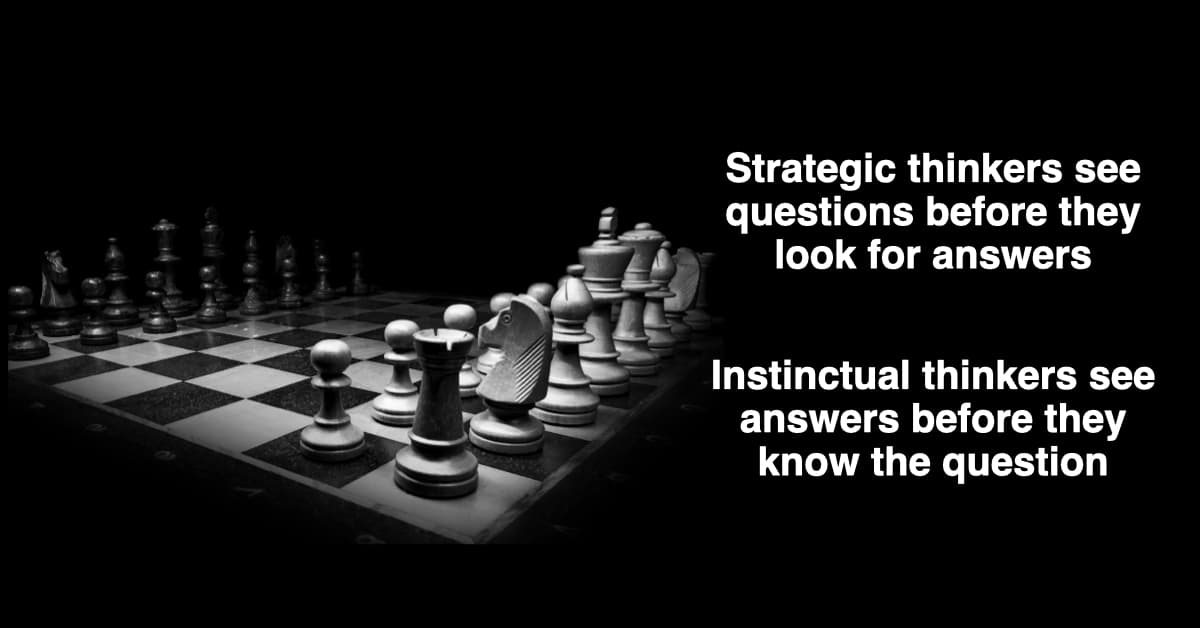
Our Strategic ThinkBox triggers deeper thinking.
As I created the Strategic ThinkBox, I made it so that each of the four questions uses a forced choice to make decisions, where you must focus on only one possible answer for each question.
- What is the core strength that will help your brand win?
- How tightly connected is your consumer to your brand?
- What is your current competitive position?
- What is the current business situation your brand faces?
Your brand’s core strength
Think of your core strength as your brand’s superpower or secret sauce that separates you from other brands. Is it your product, brand story, consumer experience, or price? Your core strength steers your entire strategy, including the brand messages and the focus of your investment. In the next chapter, I show a unique process for how to choose your brand’s core strength and then show you how to write smart, strategic objective statements around your core strength.
Consumer strategy
Start by determining where your brand currently sits on the brand love curve, whether your brand is unknown, indifferent, like it, love it, or at the beloved stage. The goal is to tighten the bond with your consumer and move them from one stage to the next. In a later chapter, I will show you how to use brand funnel data, the voice of the consumer, and market dynamics to determine where your brand sits on the brand love curve. I will outline clear game plans for each stage.
Competitive Strategy
Regarding the competitive strategy, you must choose from one of four competitive situations in which your brand operates. The dominant leader in the category is the power players, who take a competitive defensive stance. The challenger brands have gained enough power to battle the market leader head-to-head. The disruptor brands have found a space so different they can pull consumers away from the significant category players. Craft brands aggressively go against the category with a niche target market and a niche consumer benefit. They are small and stay far away from the market leaders.
Situational strategy
Understanding your brand health starts with looking at internal and external factors. Choose one of four potential situations: whether you keep the momentum going, face a business turnaround situation, realign everyone behind a strategy, or your brand is a start-up. Each situation leads to distinct strategies and leadership styles to deploy.
To illustrate, click on our Key Issues exercise, which is part of our Marketing Plan template.
Brand Strategy Statements
Strategy = Programs + Accelerator + Results
One of the biggest flaws with strategy is the failure to cascade strategies down throughout the organization. The people who clap at the town hall meeting walk back to their desks in a state of confusion, wondering how the new strategies on the presentation slides impact their jobs.
I find it frustrating watching everyone overcomplicate strategy. They mistakenly think strategy requires more intellect, so they use big, vague words when smaller, specific words work better.
Let’s simplify strategy. Explain what program you will invest in. Then, outline who you will focus on, backed by an underlying accelerator for why you think it will work. To simplify it, with each strategic program, you will do something that gets the consumer to do something that turns into an explainable result of what you get.
To illustrate, click on our Brand Strategy Statement exercise, which is part of our Marketing Plan template.
Build programs to deliver the vision
The investment in programs to deliver the strategy whether you are building the brand promise, brand story, purchase moment, product innovation, and consumer experience. These crystal-clear marching orders to the team leave no room for doubt, confusion, or hesitation. In this Gray’s Cookies example, the strategic capability is to “Communicate Gray’s new ‘Guilt Free’ positioning.”
Focused Accelerator
A trend accelerator already happening in the market that can accelerate your strategy. In this Gray’s Cookies example, the focused accelerator is “to a growing proactive preventer target who live a low-carb keto life.”
Performance Result
Drive a specific performance result linked to the market impact, making the brand more powerful or profitable. In this example, the result is “to attract and tempt them to try Gray’s and drive higher market share.”
To illustrate, click on our Brand Strategy Statement exercise, which is part of our Marketing Plan template.
Summarizing each Brand Strategy for presentation to Management
Once you have crafted your marketing strategies, create a slide for each strategy in your presentation:
- First, include the strategic objective statement.
- Then, list the goals to measure the desired result of this strategy.
- Next, outline three tactical programs where resources will be invested.
- Finally, insert a “watch out statement” to address potential issues that could derail the strategy.
By following these guidelines, you can effectively develop and present a comprehensive brand strategy that drives your marketing plan and sets your brand on a path to success.
To illustrate, click on our Brand Strategy page. Importantly, you can zoom in, download it, or share it.
Marketing Execution Plans
For each significant investment, create a separate execution plan to ensure everyone has specific instructions for their function, eliminating any room for misinterpretation. Each strategic investment should have an execution plan, with most plans covering:
- Brand Communication
- Innovation
- Sales
Your execution plans should combine strategic thinking and brand positioning:
- First, start each execution plan with your marketing strategy statement from one of your strategies.
- Then, in the next four sections, refer to your brand positioning work to lay out the target, brand idea, main benefit, and support points.
- Finally, tailor the final two sections to the type of execution.
Brand Communication Plan
Essentially, the brand communications plan should answer seven questions that guide and inspire the creation of the brand story, establishing your brand positioning and motivating consumers. Our marketing plan template includes a Brand Communications Plan
Using the marketing plan template, answer the following questions:
- First, what do we need our advertising to do? (Marketing strategy statement)
- Next, who is our desired consumer target? (Most motivated people to buy what we do)
- Third, what are we selling? (Our main consumer benefit we stand behind)
- Fourth, why should they believe us? (Support points to back up the main benefit)
- Then ask, what is our organizing brand idea? (Brand soul, essence, or DNA for the brand)
- What do we want people to see, think, feel, do, or influence? (Desired consumer response)
- Finally, where will our consumer be most receptive to see and act upon our message? (Media plan)
Lastly, consider this marketing plan example of an Brand Communications Plan for Gray’s Cookies:
Innovation Plan
Firstly, your brand idea should direct the product development team in managing innovation ideas at various stages:
- Exploratory stage (beyond five years),
- Pipeline ideas (two to five years), and
- Go-to-market launch plans (within the next two years).
Secondly, utilize the marketing plan template to influence, manage, and direct your product development team, ensuring a focus on brand strategy.
Lastly, consider this marketing plan example of an Innovation Plan for Gray’s Cookies:
Marketing Plan examples
Examples of Marketing Plan slides we use in our template
Importantly, we provide marketing plan examples of execution slides you can use in your marketing plan. For instance, you will find PowerPoint slides you can use for advertising, social media, and search, event sampling. You can also find slides for new product launches, new product pipelines, competitive defence plans, merchandising and in-store sampling, customer marketing, and promotions. To view, click on any of the marketing plan example slides below.
Are you not seeing high quality plans from your team?
Should you find yourself leading a marketing team and struggling to see high-quality plans, our marketing training is here to assist. Often, marketers attempt to juggle too many elements in their plan, resulting in none of their ideas receiving sufficient resources to make a significant impact.
Moreover, marketing plans that don’t make firm decisions distribute their limited resources across numerous tactics, leading to none of the ideas generating substantial results. Consequently, a lack of vision causes the plan to become aimless, creating confusion among those responsible for executing the brand’s strategies.
Fortunately, at Beloved Brands, we guide you in constructing your plan with elements such as brand vision, purpose, values, key issues, strategies, and execution plans.
Additionally, for those seeking further detailed guidance, I encourage you to explore my Beloved Brands book on the subject.
Therefore, if your objective is to receive better plans from your team, our Marketing Training will help.
With a wealth of experience working on prominent global brands, I was responsible for developing a marketing plan each year. Starting my journey as an assistant brand manager, I eventually worked my way up to the marketing director position. As a VP of Marketing, I meticulously reviewed 15 plans annually before their presentation to the President.
Subsequently, this inspired me to create a new marketing plan template, which I have continuously refined over time. Hence, if you believe your team could profit from improved planning capabilities, I urge you to visit the following link for more information: Beloved Brands Marketing Training.
Frequently Asked Questions about the Marketing Plan.
What is needed in a marketing plan?
First, every plan must have a vision that acts as the guiding line to chase. I like to have a main sales goal tied to that vision. Second, conduct a business review to focus on what’s driving growth and holding the brand back.
Third, use our Strategic ThinkBox to come up with key issue questions that are facing the brand. Then, dig in and build out the strategies that answer the issues.
Next, brainstorm tactics with your team. And build tactics, including brand communication, innovation, and sales or retail.
Last but not least, create goals and measure performance. A main sales goal can be tied to the vision and can drive parts of the plan, but they can also be used at the end to ensure you measure the strategies and tactics.
Why is a marketing plan important?
The main role of a plan is to gain the approval of your senior management team. Importantly, explain how you will use your resources to drive the growth of your brand. And the plan becomes the roadmap that everyone on your team will follow and help achieve your brand goals. An effective marketing plan will create the brand vision, purpose, key issues, strategies, and tactics.
What are common marketing plan mistakes?
First, the most common mistake I see in plans is when they present a messy story. That’s the reason you should have a good marketing plan template. It won’t go well if you are standing at the front of the room and the boss is confused.
Second, the other common mistake I see in marketing plans is trying to do too many things. Importantly, when you spread the limited resources across too many ideas, none of them will have enough resources to make a difference. You will always be disappointed in the results.
Third, another mistake I see is when parts of the team do not agree with. The brand leader must work to involve the other teams to ensure the team is aligned. Ensure you involve sales, operations, R&D, and your ad agency. And include all those who deliver on behalf of the brand.
Fourth, I have seen plan presentations get out of control. One year, a small brand had 127 slides. Crazy. You should have no more than 20 slides.
What is in a marketing plan?
If you are looking for an ideal outline for a marketing plan template, include a vision, purpose, goals, SWOT analysis, key issues, strategy statements, marketing communications plan, sales plan, new products plan, forecast, and financials. Marketing Plan template.




